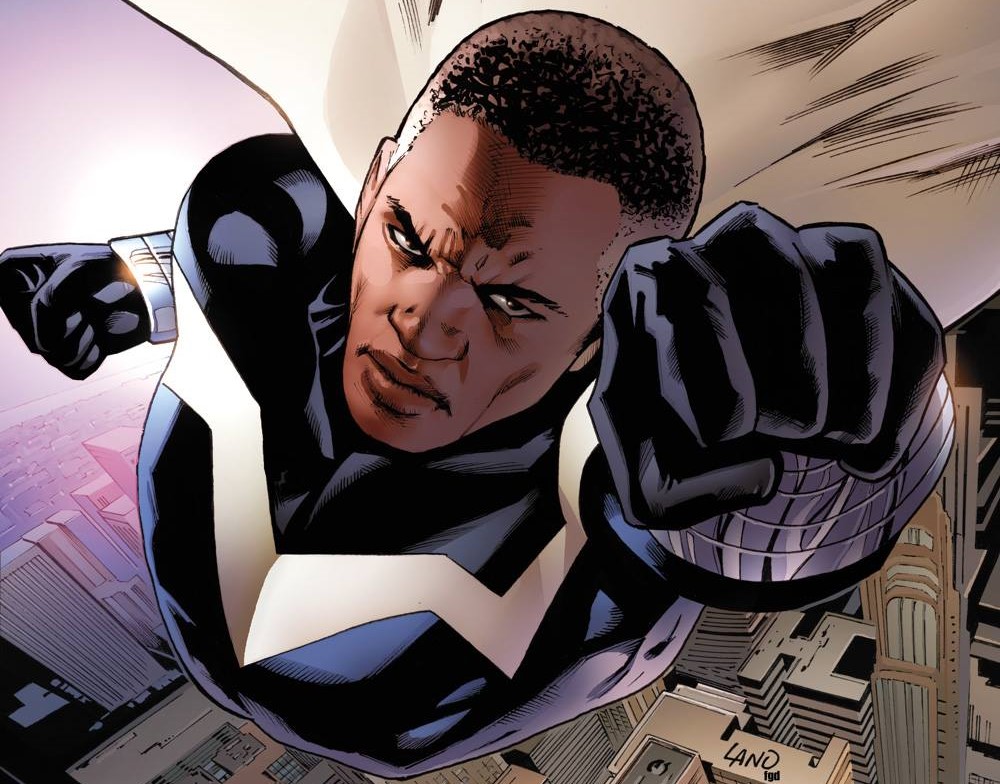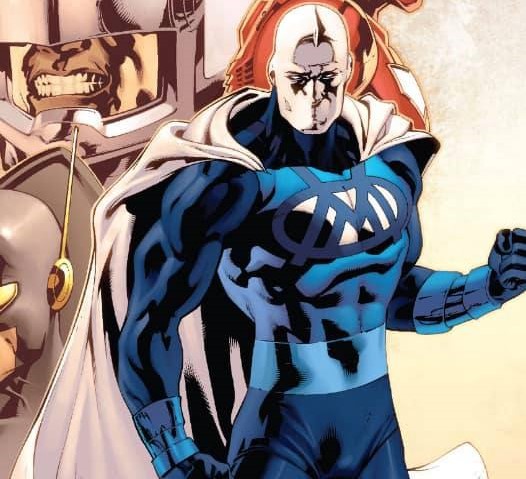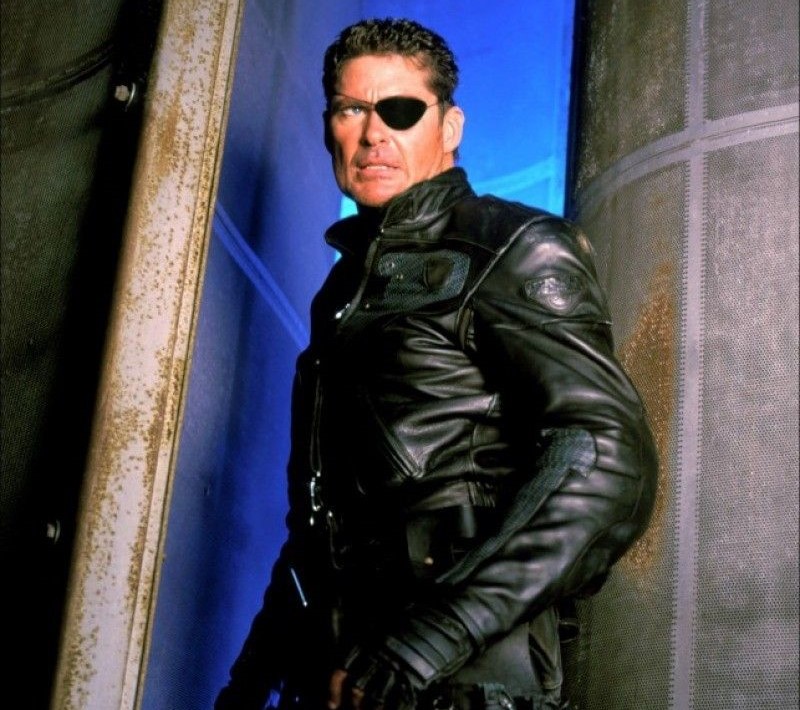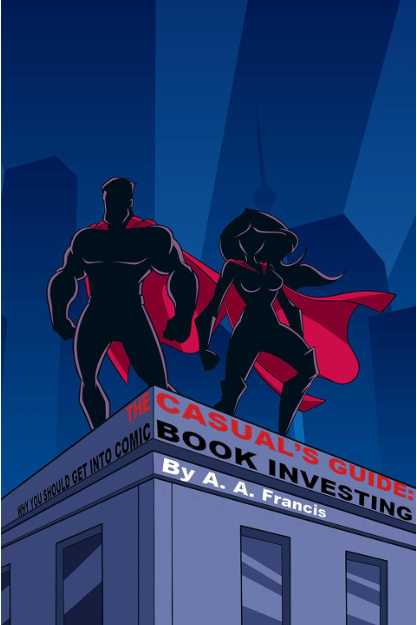The Overlooked Brilliance of Blue Marvel

(Image courtesy Marvel/FB)
The Marvels made the wrong kind of film history for Disney’s MCU – it became the once-unstoppable corporation’s first undeniable bomb. Online haters and contrarians alike can’t get enough of delighting in the film’s failure. Famed writer Stephen King took it upon himself to defend the film against toxic fanboys, trolls, and misogynists. However, one reason I was anticipating seeing The Marvels was the fantastic and persistent rumor that fan-favorite hero Blue Marvel was going to make his MCU screen debut in the film. Unfortunately, that did not happen and instead, we get several scenes featuring flerkens. (I did not hate the film, but I’m so done with flerkens).
Unfortunately, The Marvels failed. I am a fan of comic book films in general, so I am not an MCU vs. DCU type of guy. I think The Marvels was butchered in the editing bay by corporate interference and creative mandates that tried insultingly to please too many demographics and failed dramatically to satisfy any. Still, I’m shocked that the MCU missed the wide-open opportunity to introduce Blue Marvel to the MCU via this film.
Not enough people know that Blue Marvel exists as a hero, except for a sizable hardcore fanbase of fans, and more people should know about him. The creation of the character is a direct challenge to the reality of so many comic book characters being white and his origins are politically and racially themed, and bombastically so, almost like an old-school Public Enemy song.
Anyone who believes that comic books should not be political has never read a comic book. The X-Men were created during the Civil Rights era of the 1960s and are a direct creative mirror of the era. Magneto’s vague 1960s origin was tweaked in 1980 to turn him into a Jewish man and a Holocaust survivor, still a controversial retcon to some fans.
Blue Marvel was created to be politically charged, bring attention to the casual and overt racism in reality and comic books, and to ask comic book fans why they fear black comic characters and feel more comfortable when they see white ones.
Blue Marvel can fly, is a living anti-matter reaction, is a brilliant scientist, and might be the most powerful being in Marvel Comics.
The MCU missed a big opportunity by not introducing Blue Marvel to spread more awareness of the character and potentially make his first comic book appearances more valuable as potential investments.
The Missed MCU Opportunity for Blue Marvel
Blue Marvel has “Marvel” in his name and there was rampant online speculation for the last few months that the character would make his debut in the film. It was only a rumor, but I was hoping it was true. Monica Rambeau, who once operated under the name Captain Marvel in the comic books in the 1980s and 1990s, was in a romantic relationship with Blue Marvel in the 2015 Ultimates comic book as written by Al Ewing and drawn by Kenneth Rocafort. Blue Marvel is a relatively new character, a Superman-like analog character, and perhaps the strongest black character in the comic book world of Marvel Comics.
Still, Blue Marvel did not appear in the film, and it is a shame. The Marvels initial release date was pushed back several times, and while I won’t spoil the two post-credit scenes here, the rumor is that they were hastily added to the film amongst a month of reshoots and new scenes added to the film before its release. I wonder if there are scenes or a post-credit scene of the first MCU appearance of Blue Marvel on the cutting room floor of an editing bay, a move precipitated to accommodate the new scenes?

(Image courtesy MFI/FB)
Well, never say never. The Sentry, another Marvel analog for Superman, was recently confirmed to be played by actor Steven Yeun in the upcoming Thunderbolts film. This casting is causing online controversy since The Sentry, who is white in the comic books, is being race bent to Asian to accommodate Yeun’s casting.
And that is perhaps the point of the existence of the Blue Marvel – what is it about non-white superheroes that make people uncomfortable? Over 86% of comic book superheroes are white – it is not a happy accident that almost 9 out of every 10 superheroes is a white dude. That is fine if you don’t mind not seeing heroes that look like you – but that fact is a reality for a reason.
To talk about Blue Marvel, we have to talk about race, race politics, and fear of black superheroes. Additionally, I will tell you why you should invest in the first appearances of Blue Marvel now before the MCU reboots, comes to its creative senses, and introduces the character in the film.
Blue Marvel Origins
I don’t mean to be so political in this column, but there is no way to talk about comic books without politics and the Blue Marvel was created in a story full of race politics. (The first Captain America comic book features a cover with Captain America punching Hitler unconscious – comic books are bathed in politics and mirror the politics of the era they are published in; it’s only a problem if you see something you don’t like.)
Blue Marvel made his first appearance in 2008 in Age of Heroes #3. The character was created by actor, writer, director, filmmaker, and comic book writer Kevin Grevioux.
Adam Breshar is a brilliant scientist, athlete, and Korean War veteran who conducted an experiment in 1962 to find a way to tap into anti-matter energy to create free energy for all. The experiment exploded and exposed Breshar to antimatter radiation that gave him the power of flight, invulnerability, and the power to channel, manipulate, and direct antimatter energy.
Breshar assumed the name Blue Marvel, wore a mask and began operating as a superhero. During a battle, Blue Marvel’s mask got torn and the public saw that the hero was a black male, a fact that shocked them and made them feel uneasy.

(Blue Marvel’s 1962-era costume and mask. Image courtesy Mosi Tibbs/FB)
President John F. Kennedy, a year before his assassination, called Brasher into the Oval Office, gave him the Presidential Medal of Freedom, and politely asked Brasher to stop operating as Blue Marvel. Due to the overt realities of racism, Jim Crow laws that would not be abolished until 1965, and the reluctance of the public to embrace black superheroes or vigilantes, Kennedy convinced Brasher that the United States and the world were not ready for a black superhero.
Kevin Grevioux is an accomplished filmmaker and writer – consider the mindset he was in to create an origin for a superhero like this. The creators of recent race-bent variations of Batman and Mister Miracle also had the faces of the characters covered in the comics to convey the unease people feel when they see black men in public.
(It also must be mentioned that most of the best-known superheroes in the world were created pre-1965 when Jim Crow laws were in effect and black superheroes could not be depicted respectfully as superhero leads. Black Panther made his comic book debut in Fantastic Four #52 in 1966, a full year after Jim Crow was abolished. That fact is not a damn coincidence. The fact that over 86% of superheroes in comic books are usually white males was not a happy, benign, and non-race-related accident.)
Brasher dumped his medal on the moon and had a family and some kids in later years on Earth. Upon another visit to the moon, he met Uatu the Watcher and rededicated his life to being a superhero in a new century and time where black superheroes are still seen as out of the norm.
Blue Marvel went largely unused in the comics until 2011 and even became the leader of the Ultimates in 2015, and the lover of Monica Rambeau. The Ultimates in that storyline went up against Galactus and is a great story.
Investment Opportunities
If you want to read about Blue Marvel, I suggest you start with 2015’s The Ultimates. The Ultimates is a variation of the Avengers where the stories reflect the politics and zeitgeist of the real world a little more. (The Avengers of the MCU were based on the first series of the Ultimates comics from 2000, not the traditional Avengers comic books. Nick Fury is white in the comic books and was race bent in the 2000 era of Ultimate Comics to look like Samuel L. Jackson. If the 2000-era Ultimates comics were never published, we would never have gotten Samuel L. Jackson as Nick Fury in the MCU.)

Before the MCU, Nick Fury was drawn as a white man in the comics. David Hasselhoff played Nick Fury in a 1998 TV movie. George Clooney was reportedly offered the MCU role once. If not for the Ultimates Comics in 2000 reimagining Fury, we would never have gotten Samuel L. Jackson’s MCU version. If the world should always be beholden to tradition unerringly, then should 86% or more of all comic book characters be white men? (Image courtesy CBF/FB)
In the 2015 Ultimates Comics, the team features Blue Marvel, Black Panther, America Chavez, Carol Danvers, and Monica Rambeau as Spectrum. The Ultimates exist to stop impossible problems from manifesting in a way that will destroy their universe – and their first problem is to stop Galactus.
Punching away at the problem is not enough to save the day and it takes the intellect of Blue Marvel to fix problems more often than not
The Ultimates Omniversal 1: Start With the Impossible Collect the first 6 issues of the series and you can get it for $11 on Kindle at Amazon.
The Skottie Young cover variant for issue #1 of this series with a CGC rating of 9.8 is worth $102.
I was unable to find any auction information for Age of Heroes #3, which features the first appearance of Blue Marvel. If you can it, get it now – I would. America Chavez made her first comic book appearance in 2011 and that one comic is now worth $350.
America Chavez made her comic book debut in 2011’s Vengence #1. America Chavez made her MCU debut in 2022’s Dr. Strange and the Multiverse of Madness which grossed just $50 million shy of a billion. A copy of Vengeance #1 with a CGC grade of 9.8 is now worth $352. This is a very obscure comic and it is no coincidence that the comic is now worth this much a year removed from America’s MCU debut.
I don’t know when the Blue Marvel will make his MCU debut – Disney has halted all films for 2024 and now Deadpool 3 is the only MCU film slated for release then. What I do know is that Adam Brasher deserves to be a household name as one of the most powerful characters in Marvel Comics, and Disney would do well to debut him in the MCU sooner rather than later. The Marvels was a missed opportunity in many ways more than one.
Read More
Whatever Happened to the Plastic Man Film? Here are 3 of His Best Stories
Here are 3 of the Best Comics Featuring Ra’s Al Ghul
There’s More to Iron Man Than the MCU: 4 of the Best Iron Man Stories

Allen Francis is a full-time writer, prolific comic book investor and author of The Casual’s Guide: Why You Should Get Into Comic Book Investing. Allen holds a BA degree from Marymount Manhattan College. Before becoming a writer Allen was an academic advisor, librarian, and college adjunct for many years. Allen is an advocate of best personal financial practices including saving and investing in your own small business.




